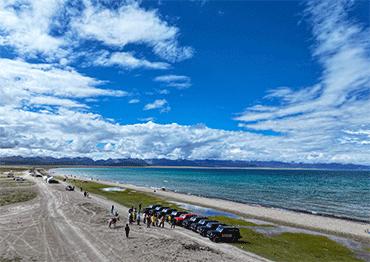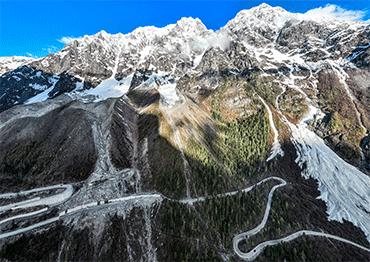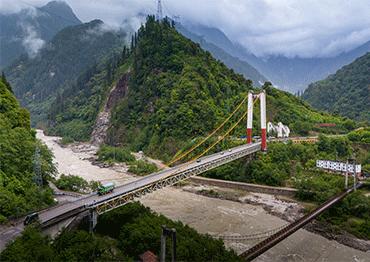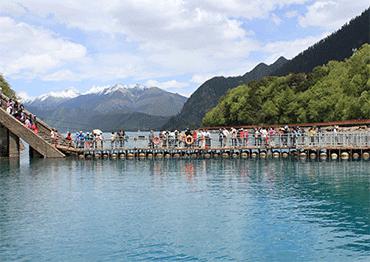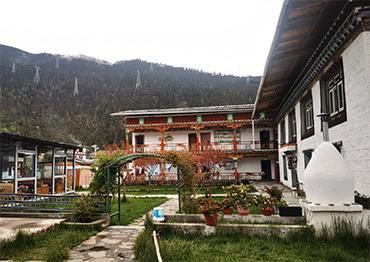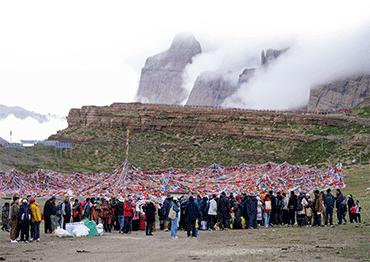Medog is a microcosm of how improved infrastructure has changed Xizang’s tourism landscape over the past few decades.
“Now people can enter Xizang by train, plane or car. It’s equally convenient to travel within the region,” said Lhapa Dolma, a Tibetan tour guide with 16 years of experience.
“It’s hard to imagine that 60 years ago, much of Xizang had no proper roads. Transport relied on human porters and pack animals like mules,” said Lhapa Dolma. Even though her child-hood home was just 20 kilometers away from downtown Lhasa, “going to Lhasa was a luxury,” she said.
This is because building roads any-where in Xizang is not easy. There are high mountains, deep valleys and frequent mudslides and landslides. In 1965, the region had only 14,700 kilometers of roads. Though the QinghaiXizang and Sichuan-Xizang highways opened in 1954, they were narrow gravel tracks mainly used for emergency and basic transportation.
Since then, government investment has increased immensely. From 2012 to 2024, 401.93 billion yuan (US$56b) was invested in highway infrastructure. Road mileage nearly doubled from 65,200 to 124,900 kilometers. High grade highways expanded from just 38 to 1,196 kilometers.
Rural roads grew from 53,200 in 2012 to 94,800 kilometers today. Bus service now covers all counties, 623 townships and 3,869 villages. In 2020, Gandeng Village in Medog became the last in Xizang to be accessible by road.
A railway milestone came in 2006 with the opening of the Qinghai-Xizang Line, known as the “Sky Road” due to the engineering challenges of building it at altitudes over 5,000 meters. It has dramatically reduced travel time and cost, opening the greater region to mass tourism.
Between 2005 and 2007, tourist visits to Xizang soared from 1.8 million to 4.02 million, an 800-fold increase compared to 1980, according to the region’s tourism authorities. As of 2024, the region’s railway network reached 1,359 kilometers.
The Lhasa-Nyingchi Railway, Xizang’s first electrified railway, opened in 2021, cutting travel time between the two cities to less than four hours. Driving from Lhasa to Nyingchi used to take at least eight hours.
The city of Nyingchi, with its mild climate and lower altitude, became one of Xizang’s most popular destinations. Tourist visits nearly doubled from 7.1 million in 2018 to 13.17 million in 2023.
Air travel has also expanded. Since the opening of Lhasa Gonggar International Airport in 1965, Xizang now has a network of five modern airports with 183 domestic and international routes to 78 cities.
“More tourist spots are accessible now. Even places we rarely visit are connected by paved roads. Tourists have more choices and travel at a more relaxed pace,” guide Shen Huajiang said.
The iconic Sichuan-Xizang Highway (G318), once a treacherous but breathtaking scenic route, has been gradually upgraded with tunnels and bridges, making it safer and more appealing to tourists.
In Lulang Town along the G318 in Nyingchi, local homestay owner Tsangkye has seen firsthand how road upgrades transformed her village.
Once just a rest stop, the town now draws droves of visitors for its meadows, forests and snow-capped peaks. Tsangkye’s family started homestays on their farm in 2008, earning only a few thousand yuan a year.
But business expanded after nearby sections of the G318 were paved in 2017, with added improvements like new bridges and tunnels to avoid dangerous curves and landslide-prone areas. Today, she runs a 22-room guesthouse that earned 300,000 yuan (US$41,714) in 2024.
Lulang is now an international tourist destination with upgraded amenities, including modern hotels. Visits to the town totaled 757,100 in 2024, including those made by foreign tourists. An employee at the five-star Nyingchi Hengda Hotel told NewsChina that they average about 900 foreign guests a year.
Since 2021, Xizang had invested 16.98 billion yuan (US$2.4b) in upgrading highways in the region such as the G318, G109 and G219. According to a tourism development conference held in Lhasain in October 2024, the goals include improving efficiency, emergency response and tourist routes to benefit local communities.
The region has also expanded energy and internet access. From 2012 to 2024, electricity users grew from 1.75 million to nearly 3.5 million. All administrative villages now have fiber optic internet and 4G coverage. Seventy percent have 5G.
In 2024, rural visits in Xizang reached 23.5 million, generating 3.3 billion yuan (US$459.9m). Over 315,200 farmers and herders benefited directly from tourism, according to local tourism authorities.
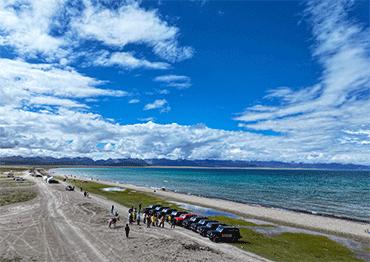
 Old Version
Old Version
